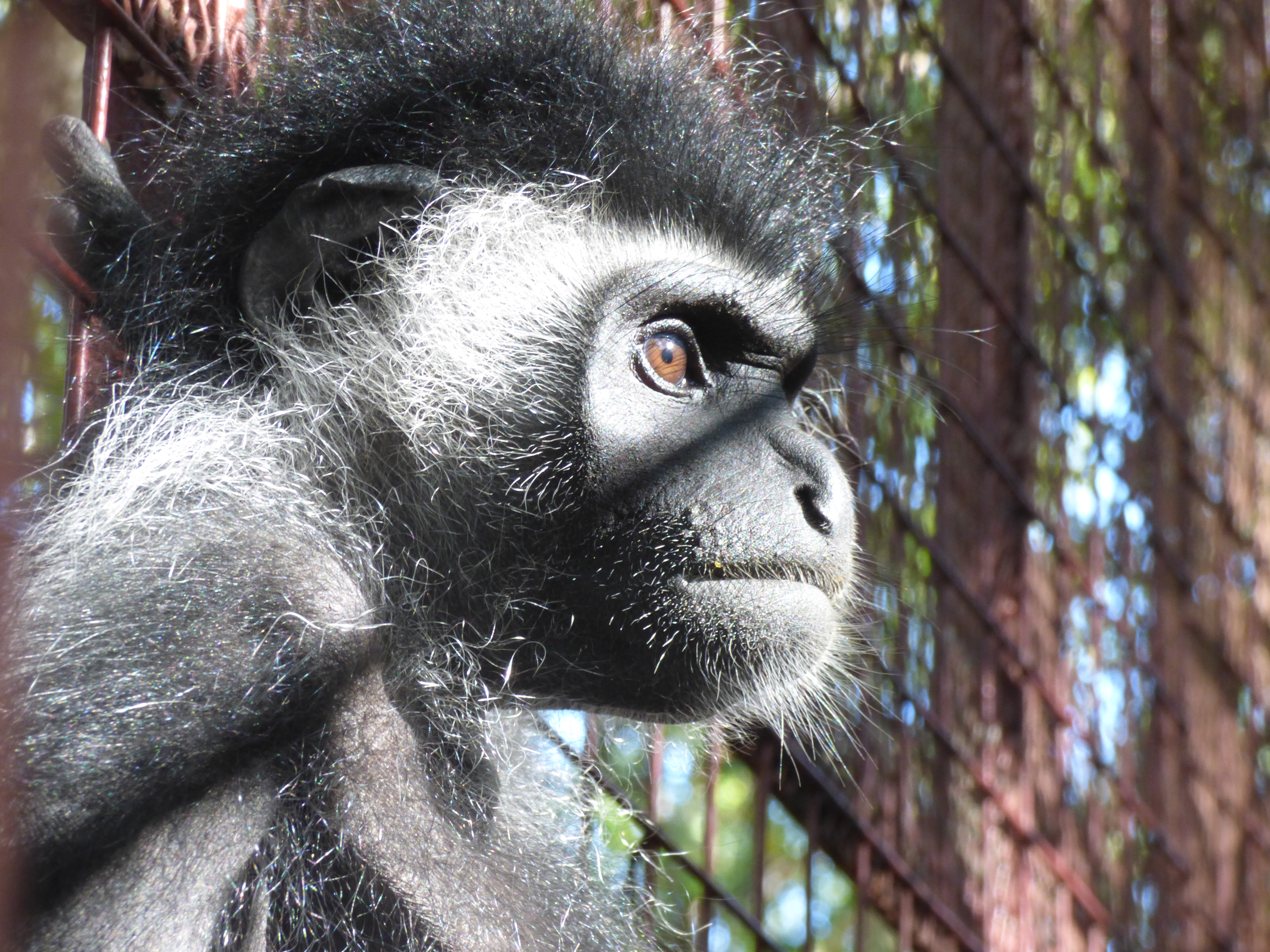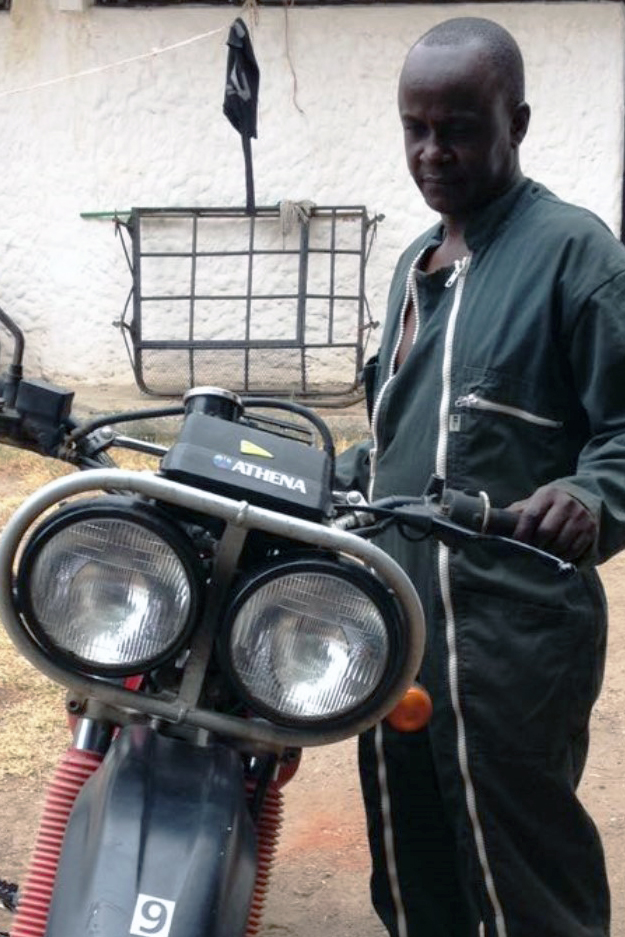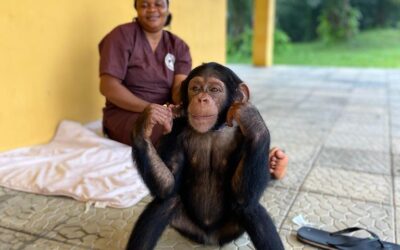Returning to the Wild: Possible but Costly
First Colobus troop going back to the wild!
By Natasha Tworoski
The coast of Kenya is home to a spectacular range of wildlife. Here you will also find dedicated PASA member, Colobus Conservation. The face of this organization is the Angolan Colobus, a brilliant black and white monkey that is threatened by a wide range of human-related threats.
Historically, hunting has been the greatest risk to colobus monkeys. However, while the biggest current threat is habitat loss, the monkeys also face fatality by electrocution by power lines, vehicle accidents, dog attacks, poisoning and continued bushmeat hunting. Colobus Conservation has helped to build unique “Colobridges” over roads to give monkeys alternative routes, installed plastic protection around electrical lines to prevent electrocutions and removed snare traps that catch monkeys (although the intended prey for these traps are small antelope).
To address the ever-increasing problem of habitat loss, Colobus Conservation works with the community to plant indigenous tree species in areas of fragmented forests. Since people as well as monkeys depend on healthy forests for survival, it benefits all to restore and protect native trees. When monkeys do fall victim to these threats, Colobus Conservation offers veterinary care and sanctuary.
Despite their name, Colobus Conservation helps not just the colobus monkey, but all monkey species found in the region. They also do public outreach work to reduce conflict between people and baboons, sykes and vervets, which are more than happy to pursue human foods and have a reputation of being pests throughout Kenya. Colobus Conservation works with local hotels and restaurants to teach them how to prevent monkeys getting too close, while still keeping them within sight in order to give tourists the opportunity to observe them. By finding this balance, everyone wins!
Colobus Conservation is preparing to release the first Colobus troop back to the wild! Tumbo was only six months old when she arrived to Colobus Conservation in 2012. After extensive medical care, she became the second Angolan colobus to be hand-raised by humans. Today, she is living with her new colobus family that is preparing to be returned to the wild soon.
The process of reintroducing monkeys to the wild requires specialized equipment that Colobus Conservation cannot currently afford.
Showing just how dedicated this organization is to monkey preservation, Colobus Conservation Director Wambui Ngunya will complete a 500km (311 mile) motorbike ride across Kenya this April to raise funds to help Colobus Conservation continue their amazing cause.
You can make it possible for Colobus Conservation to continue their 24/7 primate rescue and response service, and do the first ever release of a colobus troop back to the wild! Please make a donation here.
Also, please share this with your friends and family on social media!
Thank you for helping us make a difference.

Tumbo, who arrived at Colobus Conservation as an infant, will return to the wild this April with the first troop.

Colobus Conservation Director Wambui Ngunya will complete a 500km (311 mile) motorbike ride across Kenya this April to raise funds.
Next Posts
Social Media and Wildlife Trafficking
Social media enables a cycle of cruelty and suffering for primates and other wildlife. But you can help protect animals.
Wildlife Policy Overview: What is CITES and how does it help primates?
CITES, an international trade agreement, has a big impact on PASA members’ work. Here’s how it shapes wildlife policy and sanctuary practice.
Wildlife Crime Won’t Stop Him
Héritier Mpo helps PASA members in DRC rescue apes and monkeys. After wildlife criminals torched his offices he must rebuild.
Trophy Hunting Poses Threat to African Primates
PASA member sanctuaries rescue and care for both monkeys and apes. Although all primates have similarities, monkeys and apes differ in their appearance, geography, and intelligence.
Monkeys vs Apes: How are they different?
PASA member sanctuaries rescue and care for both monkeys and apes. Although all primates have similarities, monkeys and apes differ in their appearance, geography, and intelligence.
Four Chimps Find Sanctuary
Through the global pandemic, and even a coup attempt, PASA and our partners did not give up on these chimpanzees – read the amazing story!
Primate Species Spotlight: The Spot-Nosed Guenon
Get to you know Africa’s remarkable monkeys. Today we feature the spot-nosed guenon, a species found throughout Africa.
A Coalition to Disrupt the Illegal Wildlife Trade
The climate crisis is devastating African primates. Our new report investigates – and shows how sanctuaries are fighting back.
Sanctuaries in Africa Face Water Shortages
Sanctuaries and their communities are facing increased water shortages in Africa. That’s why PASA is working to find water access solutions.
The Climate Crisis Hits African Primates Hard
The climate crisis is devastating African primates. Our new report investigates – and shows how sanctuaries are fighting back.










